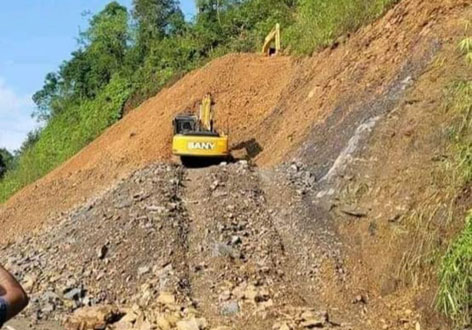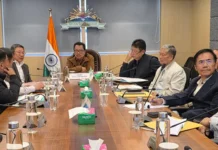Monday Musing
[ Junroi Mamai ]
The arrival of monsoon every year leaves a trail of death and devastation in the entire Northeast region. Rivers swell up and flood into the plains while landslides hit the hilly terrains, snapping road communication and throwing normal life out of gear everywhere.
In Arunachal, many districts, like Papum Pare, Kurung Kumey, West Kameng, Upper Subansiri, Lohit and Changlang, are reeling under the devastation caused by heavy rainfall and landslides.
In Changlang headquarters, for instance, road communication has been greatly affected since 14 June after landslides damaged large portions of the 45-km-long Margherita-Changlang road. The road serves as the lifeline of the district headquarters and its sudden closure has hampered food and vegetable supply to the headquarters, besides movement of people in medical emergencies to nearby Assam.
Though work is on to make the portion of road open for traffic, there is no significant change even after the passage of 13 days, owing to continuous rainfall in the region. People travelling from either side of the closed road have to disembark from their vehicles and then proceed on foot towards the hilly slope over the damaged portion of the road.
However, on 24 June, the district administration issued a notice prohibiting movement of all types of vehicles along the Margherita-Changlang road for three consecutive days, ie, on 27, 28 and 29 June. The administration took the decision in order to push more men and machinery to speed up the repair work.
With each passing day, people are becoming anxious and are desperately awaiting the road to become open for traffic, so that those who are sick and who need urgent medical treatment can reach Assam without wasting precious hours using the alternative Trans-Arunachal Highway (TAH) Changlang-Khonsa-Deomali route. The people of the district headquarters have no other option, even though the TAH Changlang-Manmao road is still incomplete.
One can only imagine the pain and anxiety of the near and dear ones of a critical patient who may have to travel for six long hours in order to avail treatment for their loved ones.
Earlier, it usually took around two hours to reach nearby Margherita (Assam) through the damaged 45-km-long Margherita-Changlang road, but now it takes around six hours for people to reach the same destination via the TAH Changlang-Khonsa-Deomali route.
The TAH Changlang-Khonsa-Deomali route includes a bypass road through Khela village via Deomali (Tirap). The bypass was constructed under the PMGSY and is presently serving as the lifeline of the people of Changlang headquarters. However, it is also in a considerably bad shape, but the people have no option but to take the bypass road to reach Assam.
Here, the state government should give more focus on similar roads under the PMGSY and the MGNREGA. These small village roads all over the state connect many isolated villages to the outside world. If the state government makes it its priority to ensure that such roads under the PMGSY and the MGNREGA remain well maintained throughout the year, most of our state’s districts will not remain completely cut off during monsoon every year.
The government should think about bringing necessary changes in its policies regarding its schemes and make sure that roads under the PMGSY and the MGNREGA are maintained every year and not every 10 years as is the existing rule. In a state like ours, which has a rough topography, small road projects under the PMGSY and the MGNREGA are equally, if not more, effective than major highway projects. They can not only play a major role in connecting remote villages to the outside world but can also serve as lifelines during annual natural disasters.




